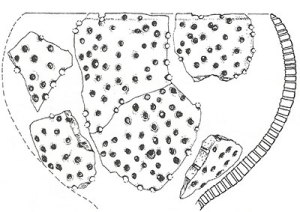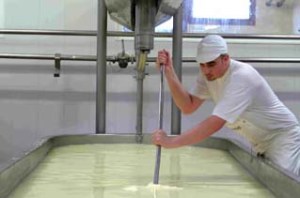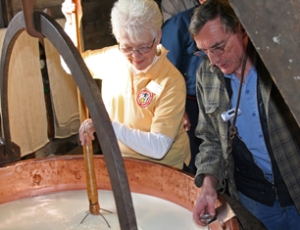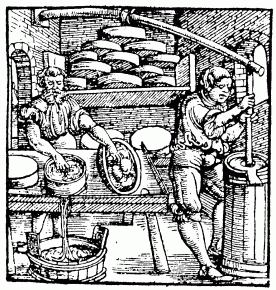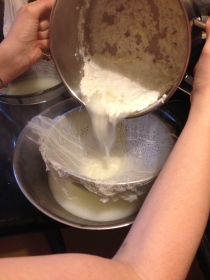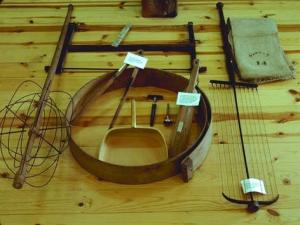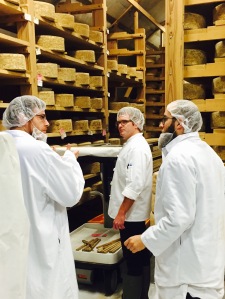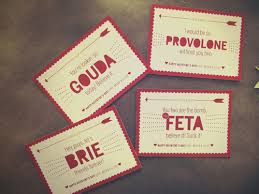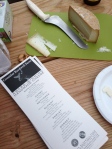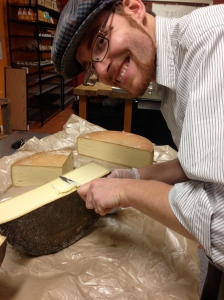Mac-n-Cheese? Yeah we do that. On February 20, 2016, the Regional Food Bank of Northeastern New York held it’s 7th Annual Mac-N-Cheese Bowl competition. The Cheese Traveler, sandwiched in between 30 stations of Hudson Valley cheese-y competitors, served up four-cheese enrobed caserecci pasta curls topped with apple-jack, red wine, and goat horn pepper-braised lamb and garnished with preserved lemon gremolata. Representing The Cheese Traveler, Cheesemonger Ryan Skrabalak and his assistants Morgan and Marina assembled gorgeous little “bowls” of the finest pasta and cheese we could offer.
Around the Siena College Marcelle Athletic Complex basketball court, 2,500 mac-n-cheese enthusiasts wandered through mac-n-cheese laden tables dodging around makeshift lines, elbow to elbow, brandishing muffin pans filled with two ounce “bowls” of the day’s competing mac-n-cheese entries. Since it was the seventh annual Mac-N-Cheese Bowl, many of these folks knew the ropes from previous years, and they brought their own muffin pans to line up, evaluate, and rank the pasta bowls.
At our station, smack-dab in the center of the court, people lined up from midcourt to the sidelines and down the aisle to the far corner. Hundreds of people pushed forward to the table at all sides, hoping to steal a chance to get some of the fast-dwindling supply of caserecci curls. Some waited in line a second or third time for another two-ounce portion. It was heated. It was flying. And it was totally crazy in there.
Our supply ran dry at 12:55 p.m. with over an hour and a half more of the event to go. Did we bring enough to spare? Probably not. We brought eleven pounds of Hessian Hill local, grass-fed lamb shoulder and leg (retailing between $12.95 and $14.95 a pound), over thirteen pounds of bronze-dye cut, fresh-water pasta, hand made by the Masciarelli Pastificio (pasta house), the oldest and smallest pasta producer in Abruzzo, Italy (retails $9.95 a 1.1 lb. package), and a four-cheese medley of Pecorino Fiore Sardo ($23.50 lb.), Tomme Chebris ($24.50 lb.), Edelweiss Havarti ($9.95 lb.), and Cabot Extra Sharp Cheddar (donated by Cabot). With the crowd hopping and the mac-n-cheese bowls flying, we could barely keep up with the demand.
If you missed out on this year’s action, you can still try our delicious cheeses and prepared foods. Come out to the 8th Annual Mac-N-Cheese Bowl, or better yet, stop in at 540 Delaware Avenue during business hours. See you soon!
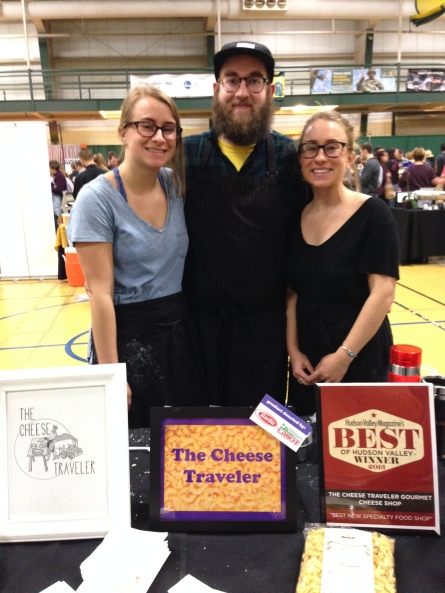
Left to Right: Marina, Ryan, and Morgan Skrabalak

